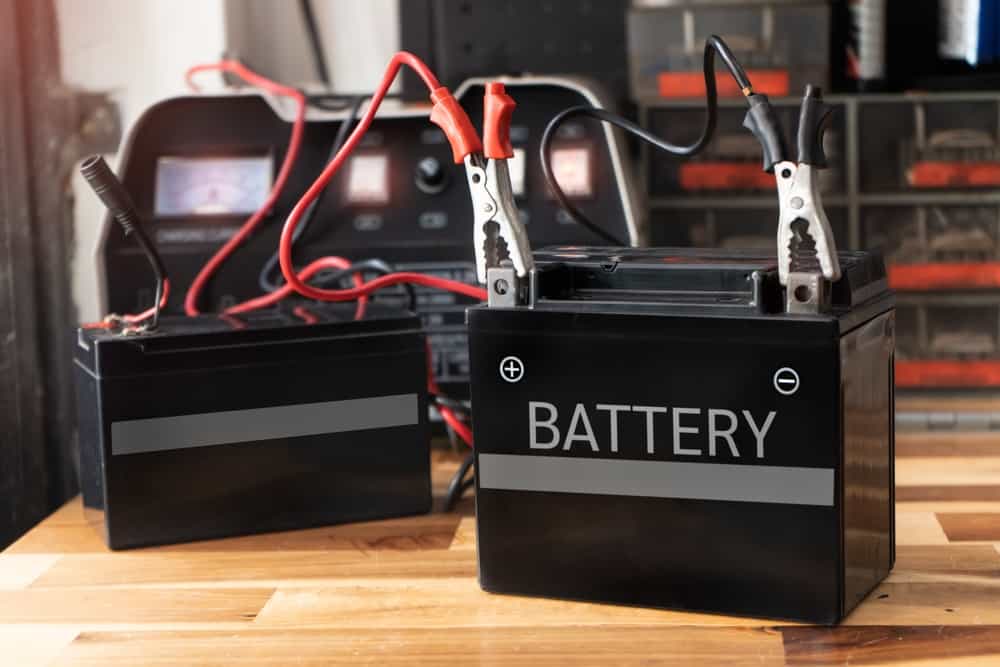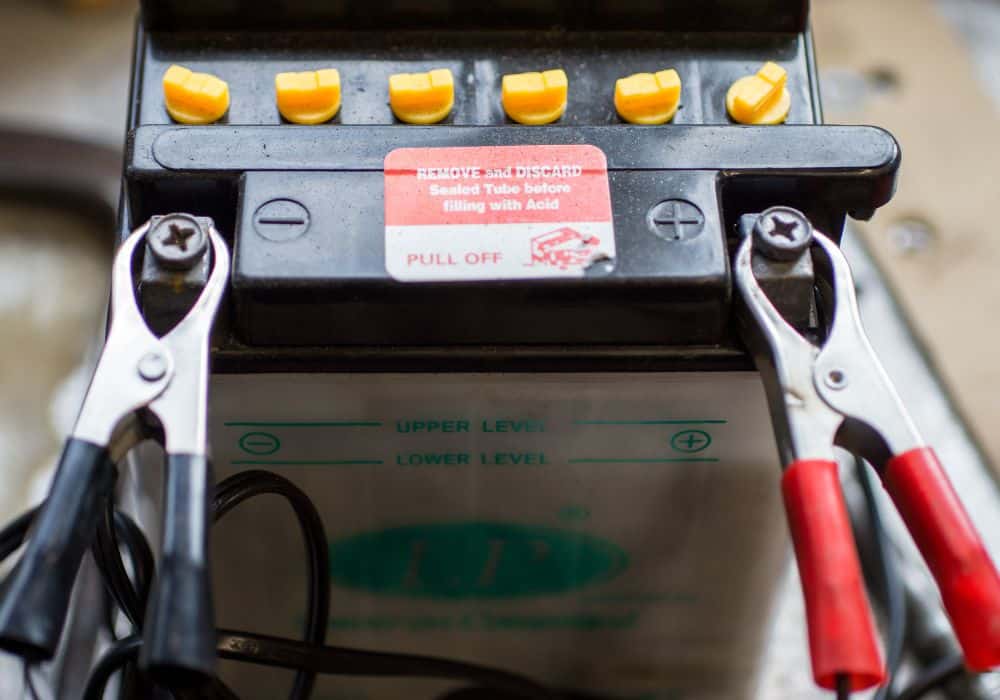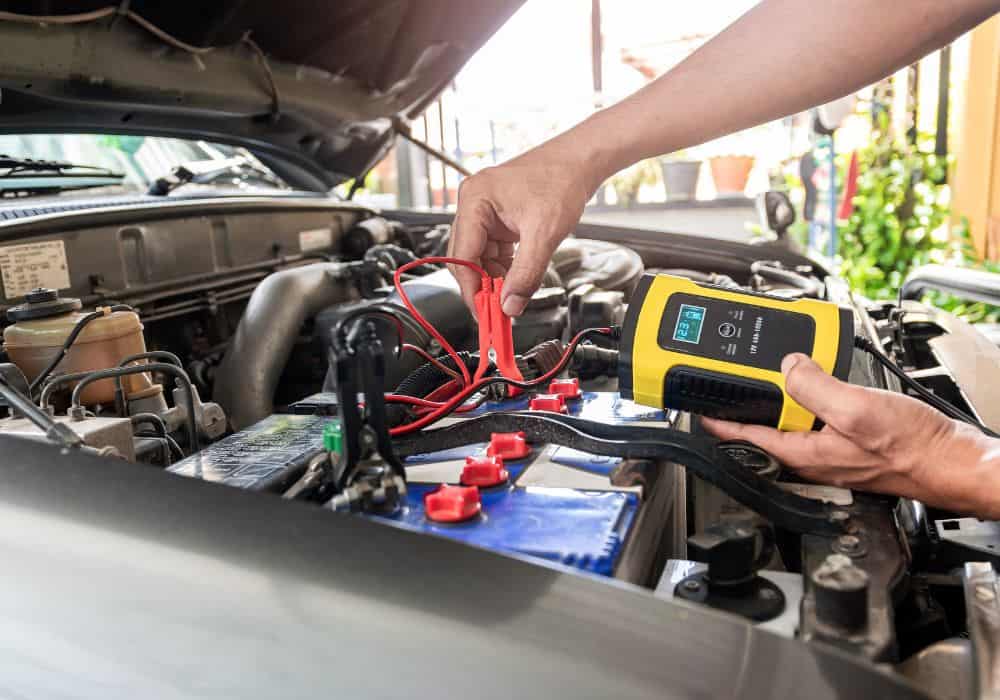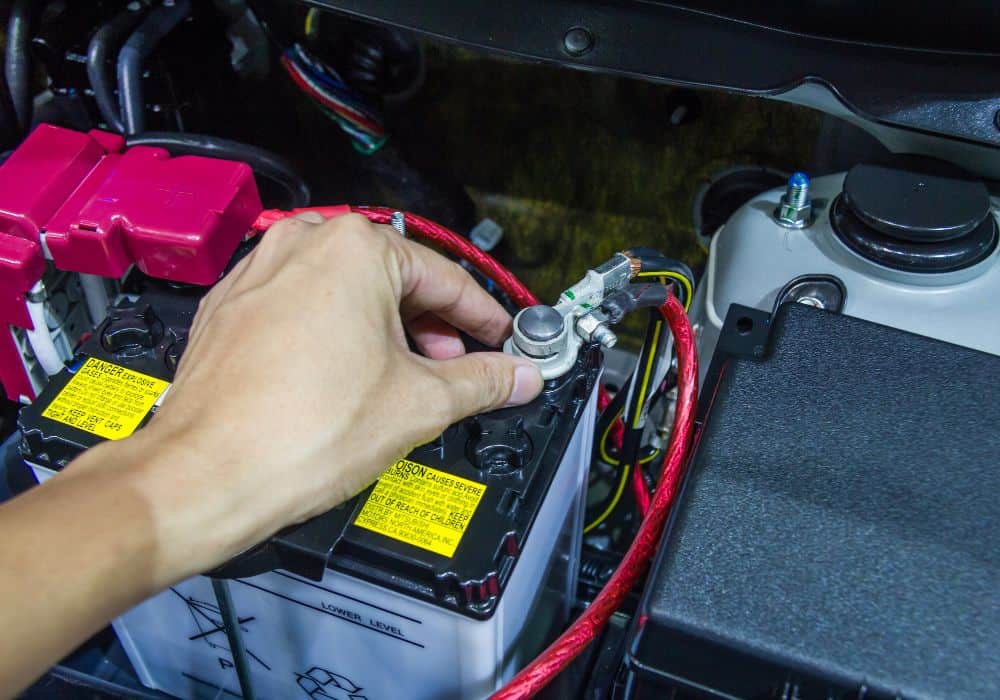If you’re not planning on driving your automobile for a while, it’s a good idea to charge up the battery. This will help keep it from going dead and will make it easier to start your car when you’re ready to hit the road again.
The two main options for achieving this are either a battery maintainer or a trickle charger.
A battery maintainer is designed to keep the battery fully charged, while a trickle charger is meant to slowly recharge the battery over time. Both types of chargers work well, but there are some differences between the two.
Let’s take a look at both options and see what makes each one better.
Table of Contents
- How Does a Battery Maintainer Work
- How Does A Trickle Charger Work
- Battery maintainer vs Trickle charger: Features and Differences
- When To Use A Battery Maintainer
- Cons Of A Battery Maintainer
- When To Use A Trickle Charger
- Cons Of Using A Trickle Charger
- What To Look For In A Battery Maintainer and Charger
- Conclusion
How Does a Battery Maintainer Work
Unlike regular battery chargers, a battery maintainer is designed to send small quantities of energy to the battery over time, helping to keep your car battery at its optimal charge.
It is just like a pair of jumper cables that hook to the battery terminals. The difference is that battery maintenance is smart. They can be programmed to read how much power is in your battery and how much more it needs to keep it at its peak.
If your battery is not at a specific low charge level, then the battery maintainer won’t do anything. It simply waits until the battery reaches the desired state before sending any additional power. This ensures that your battery is properly maintained and doesn’t overcharge.
To effectively use a battery maintainer:
- Hook up the jumper cables to your battery with the positive terminal connected to the negative terminal.
- Then, plug the box using an AC adapter into your wall outlet.
- The battery maintainer will automatically convert the AC power from the wall into the DC power that your car battery needs.
How Does A Trickle Charger Work
A trickle charger is quite similar to a battery maintainer, and sometimes modern ones may look alike.
The major difference that defines any charger as a trickle charger is its low amperage option. Most trickle chargers put out somewhere between 1 and about 3 amps,
However, they don’t stop sending a battery with these low electrical currents. Even when at 100%,
This wouldn’t be a problem if you had a lithium-ion battery. But, if you’re dealing with a lead-acid battery, you risk damaging your batteries in the long run.
To connect a trickle charger to a battery:
- Check the voltage capacity of your battery and set your trickle charger to suit the correct voltage.
- Then, connect both clips of your trickle charger to the battery terminals. The negative lead (black clip) connects to the negative terminal on the battery, and the red clip (positive lead) connects to the positive terminal on your car battery.
- Now, plug the trickle charger into a standard household outlet, turn it on, and let it do its work.
Battery maintainer vs Trickle charger: Features and Differences
1. Overheat Protection
A battery maintainer is a great way to keep your battery in top shape and protect it from overheating. The battery maintainer monitors the temperature of your battery and will shut off the charging process if it gets too hot. This helps extend your battery’s life and keep it working properly.
On the other hand, a trickle charger does not have this feature. If you leave your trickle charger plugged in all day, it could get very hot and cause damage to your battery.
2. Automatic Shutdown
Most battery maintainers have automatic shutdown features. These features help to prevent overcharging and overheating by shutting down the charging process when the battery is fully charged.
To enjoy this feature on a trickle charger, you need to opt for an automatic model rather than the common manual trickle charger.
3. Safety
Battery sulfation is a wasting disease that claims the life of 80% of batteries in use worldwide. Some battery maintainers employ a desulfation pulse that cleans your battery plates. This automatically prevents sulfation buildup that can lead to premature battery failure.
This is a big advantage that these devices have over trickle chargers and can improve your battery’s life cycle by up to 5 times.
4. Speed
Trickle chargers and battery maintainers will charge a car battery at different speeds. Battery maintainers use lower amps over long periods of time to fully charge a battery, whereas trickle chargers vary the flow of energy to charge the battery more quickly.
5. Price
A battery maintainer is a slightly more expensive option, but it offers some additional features that may be worth the extra cost.
For example, a battery maintainer will typically have a built-in display that shows you the current battery charge level. This can be helpful in making sure you are not overcharging your battery.
When To Use A Battery Maintainer
A battery maintainer is a great way to keep your car battery in top condition. Here are a few tips on when to use one:
- If you know you won’t be driving your car for a while (more than a week or two), hook up the battery maintainer. This will keep your battery from draining and will help prolong its life.
- If your car is going to be stored in a cold garage or shed over winter, a battery maintainer is a must. Cold temperatures can cause your battery to lose power and die prematurely.
- If you have an older car with an aging battery, a battery maintainer can help keep it going strong. By keeping the battery charged, you can prolong its life cycle.
Cons Of A Battery Maintainer
If your vehicle has any significant loads on it, a battery maintainer will not be able to charge it. Always make sure to disconnect any lights or accessories before using a battery maintainer. If not, you will still end up with a dead battery.
When To Use A Trickle Charger
1. Short-term Needs Like Overnight
If you notice your battery is running a bit low, you can trickle charge it overnight to give it a full charge. The amperage levels from the trickle charger won’t cause any damage to your batter in that time frame.
In the morning, you can just remove the alligator clips from the battery and roll your car or motorcycle into a fresh start for the day.
2. When You Have Parasitic Drains
If you find that your car battery is draining for no apparent reason, it may be due to a parasitic drain. This is when some electronic device in your automobile is drawing power from the battery even when it’s turned off.
It could be an audio system installed that constantly drains your battery without you knowing about it.
In these cases, a trickle charger can be a wise choice to overcome any parasitic drains and keep your battery charging.
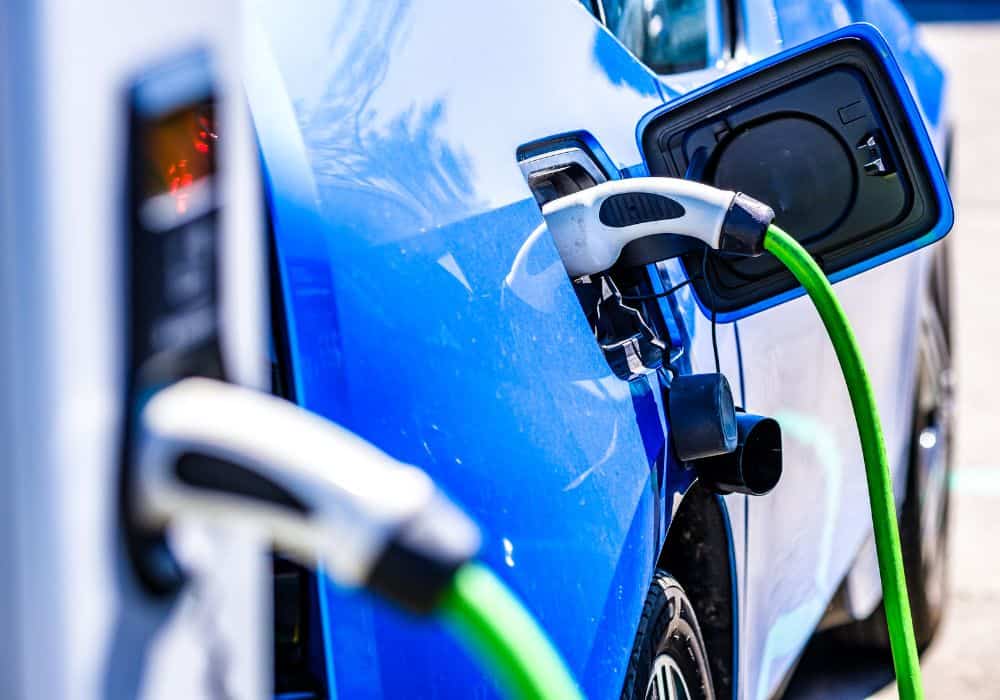
3. To Revive Dead Batteries
A trickle charger is a great way to revive your car’s dead (flat) battery within 24 – 48 hours, provided your battery has not exceeded its lifespan.
Cons Of Using A Trickle Charger
You should not leave your trickle charger unattended for too long. It would result in a dead battery, or in the worst cases. It can lead to a fire or explosion.
What To Look For In A Battery Maintainer and Charger
When it comes to battery chargers, there are a few things you’ll want to keep in mind in order to find the best one for your needs.
Consider the type of battery you’re using: There are different chargers for different types of batteries, so it’s important to make sure you’re using the right charger for your particular battery. For example, you should never use a battery maintainer with a lithium battery without a BMS to avoid damage.
Take a look at the voltage of the charger. You should ensure that your charger can provide enough power to fully charge your battery. Otherwise, you’ll have to charge your battery more often than necessary, which can shorten its overall lifespan.
Consider the size of the charger. If you’re planning on traveling with a battery maintainer or trick charger, it’s better to get something small and compact rather than something big and bulky.
Conclusion
Both the battery maintainer and trickle charger are great options for those who want to keep their batteries in top condition. However, If you’re unsure which one to choose, consider your driving habits and how often you use your car.
A battery maintainer may be a better option if you only use your car occasionally since it is fitted with a float mode that keeps your battery charged and ready to go when needed.
But, If you use your car regularly, a trickle charger may be a better option since it will keep your battery charged even if you forget to switch off your headlights or leave your car door open.
As always, I hope this guide helped you make the best choice between a battery maintainer and a trickle charger. Feel free to drop a comment below!
